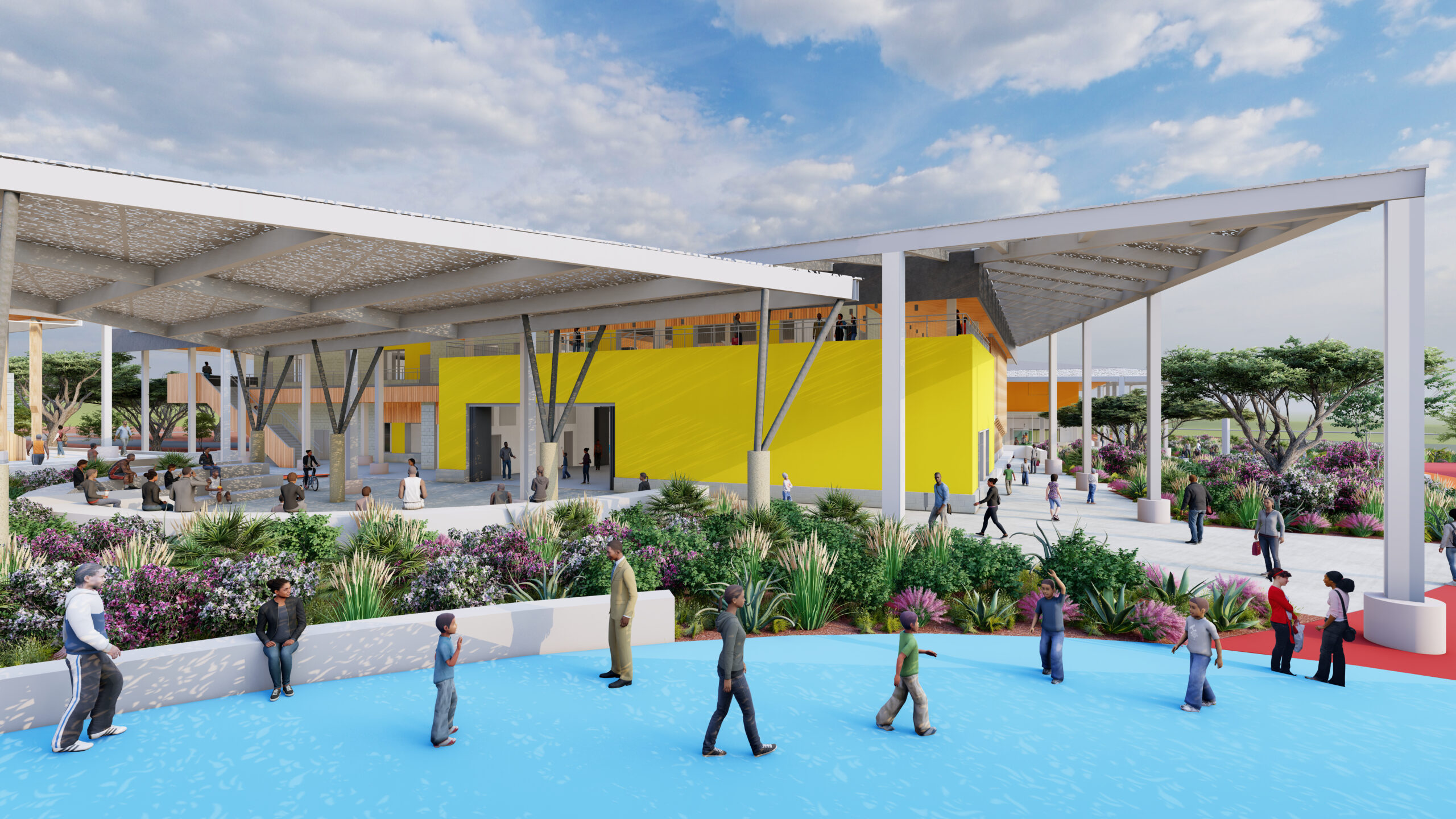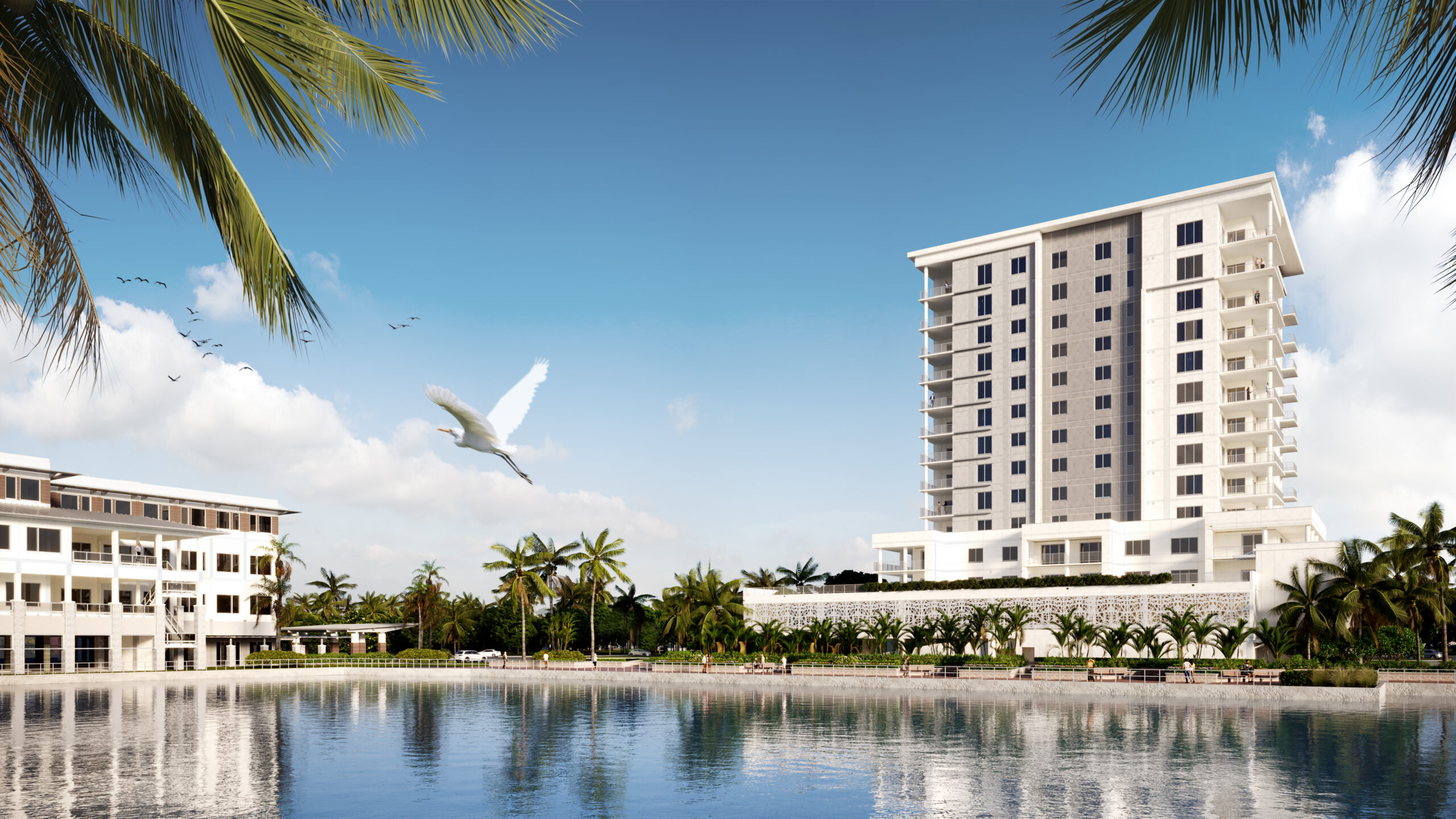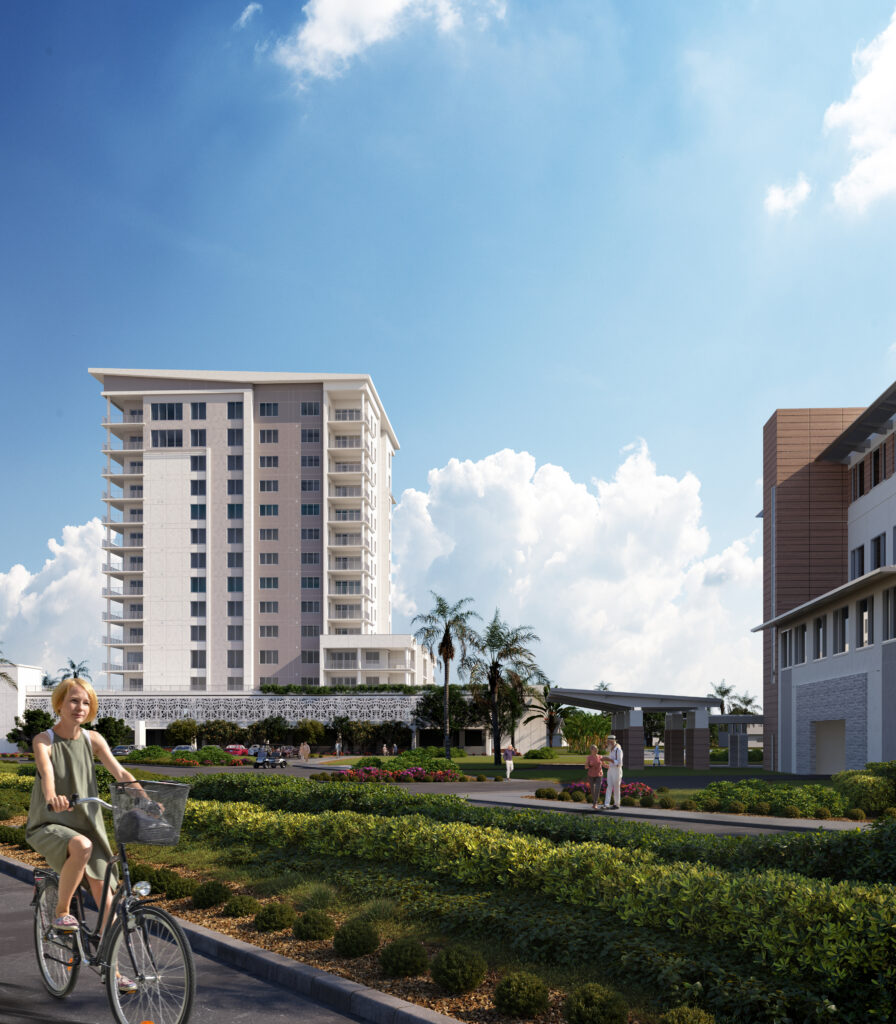Each summer brings a new set of headlines broadcasting the misery of record heat, flooding, and storms that climate change is inflicting worldwide. Resiliency in the face of such devastation is among Perkins Eastman’s top sustainability goals, and while it applies to every new project we take on, architects are making noted advances in this pursuit at hot, storm-worn sites in the Caribbean and southwest Florida. The mission in these vulnerable areas is not only to design buildings that can withstand hurricanes, earthquakes, and floods, but to make them anchors of their communities for generations to come.
Arthur A. Richards PreK-8 School | St. Croix, US Virgin Islands
This combined elementary and middle school marks the rebirth of the Arthur A. Richards junior high school, which was located on St. Croix’s west coast before back-to-back hurricanes Irma and Maria destroyed it in 2017. Six years later, the school is rising on the site of a former elementary school, which was further inland and on a higher elevation. As the school’s architect of record, Perkins Eastman is overseeing the first new public school to be built anywhere in the US Virgin Islands for nearly 30 years. Before now, the Federal Emergency Management Agency (FEMA) would pay only as much as what was required to bring a damaged building back to its previous state—a “patch and repair,” Principal Mary Rankin says, which has kept affected schools trapped in a 1970s status quo.
A new law, however, requires FEMA to fund work that meets current design standards and code. Perkins Eastman, working with the Virgin Islands Department of Education, management consultants Witt-O’Brien’s, and FEMA, developed these forward-thinking education sector industry standards that now determine funding for the replacement and repair of damaged schools. “Now you can spend money on the things that you never thought about or dreamed of with these 1970s schools,” Rankin says.

Each building at the new Arthur A. Richards K-8 School has wide overhangs fashioned from latticed white metal, which provides shade while also reflecting the sun’s heat. Other design details include saturated colors to reflect St. Croix’s Caribbean culture, vertical fins that also help deflect the sun, and louvered panels to naturally ventilate the building. The plans were executed in partnership with DLR Group, which produced the design’s bridging documents. All renderings © Perkins Eastman



